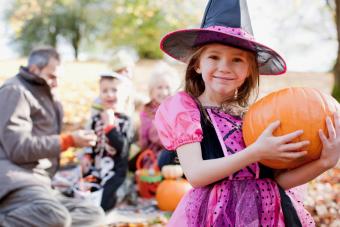
Christmas traditions in Peru are believed to have been established sometime around 1535. This was the year Francisco Pizarro took control of Lima two years after defeating the Inca emperor Atahuallpa. Christmas celebrations have traditionally been religiously based and the holiday traditions are ones that the Peruvian people hold sacred and dear.
Christmas Traditions in Peru are Steeped in History
Given that the majority of the Peruvian population practices Catholicism, it comes as no surprise there is a long and celebrated history of Christmas traditions in this part of the world. Some of these traditions are similar to those practiced in the United States and Europe since they revolve around the Church, but there are also a few traditions that are entirely different. Though traditions may vary by region, there are some that are common to the nation as a whole.
Christmas in Summer
December is the first month of summer in Peru, with the first day of the warm season falling just before Christmas, on December 21 (the winter solstice in the Northern Hemisphere). While students in the US, Canada, Europe, and other countries in the Northern Hemisphere are on winter break, in Peru the students are enjoying a summer break with a special holiday.
Santa Claus in Peru
Santa Claus became part of the Peruvian celebrations sometime in the late 1800s. While St. Nick has a commercial foothold in the culture and is a fun element of the celebration, the prominent focus is still the religious celebration of the birth of the Christ child.
Chocolatadas
Chocolatadas is an event that takes place in Peru during the weeks before Christmas. The tradition began as a way to share with those less fortunate during a blessed time of the year, and while the Peruvian masses celebrate the season with this tradition; it remains highly popular in the more poor and isolated mountainous regions of the country. During Chocolatadas, homemade hot chocolate, Panetón, or sweetbreads, and small gifts are given to children and their families in hopes of spreading joy and Christmas cheer. It is a small, cultural gesture that encompasses the precise sentiment of the holiday season.
Noche Buena
For most Christians celebrating Christmas around the world, December 25th is the big day for gift giving and receiving, feasting and celebrating. In Peru, the big day falls on Christmas Eve, December 24. For people living in this part of the world, this day is known as Noche Buena or 'Good Night.
Mass and Festivities
Practicing Catholics attend a special mass known as Misa de Gallo that usually takes place at 10 pm. Afterward, everybody goes home to open gifts (although some regions of the country hold off on gift opening until January 6th.) Following paying religious homage and present time, a feast of an elaborately prepared Christmas dinner of traditional roasted turkey, with plenty of sides and a heaping side of panetón and hot cocoa. Firework displays and firecrackers are both common occurrences on December 24th.
Gift Giving
Presents are usually exchanged and opened either before the family meal or afterward. However, this can vary by region. In Andean regions of Peru, for example, gifts are typically exchanged on January 6 (Epiphany) after the celebration of the arrival of the Three Wise Men.
The Continuing Celebration
After the smaller children are put to bed, the adults may continue the Noche Buena celebration until the wee hours of the morning. Many families have big house parties that include music and dancing. In order to prepare their homes for the festivities, many families will clear their living room and dining rooms of furniture in order to transform them into dance floors. Of course, after celebrating all night long, most sleep in on the morning of December 25th.
Traditional Peruvian Christmas Food
Most Christmas meals served in Peru include traditional turkey as well as tamales, regional salads, applesauce, and a sweet bread called Panetón or Panettone (taken from Italian tradition). The hot chocolate that Peruvians enjoy over the holiday season is usually made from scratch using melted rich dark chocolate, cinnamon, and cloves. Potato and rice dishes find their way to the holiday dinner table as both items are staples in the many southern hemisphere diets.
Peruvian Christmas Day dinners largely depend on the region that those celebrating reside in. True, turkey is the traditional go-to main course, but coastal residents might swamp the bird out for fish, mountain dwellers go for varied meat selections and those living in the jungle regions often choose to dine on wild chicken over the holidays.
Nativity Scene
The Nativity manger is a focal point of Christmas decorations in a typical Peruvian household. Most mangers feature intricate detailing and are carved out of pottery, wood or huamanga stone. The manger is what the gifts are spread around on Christmas Eve. Another tradition is for the Nativity manger to feature native animals such as llamas and alpacas instead of sheep and goats. Some areas have live nativity scenes.

Placing Baby Jesus in Manger
The baby Jesus figurine isn't placed in the nativity manger until the stroke of midnight, signifying his sacred birth on Christmas day. A child, usually the youngest in the family, is often chosen to place the figurine in the manger.
Celebrating Peruvian Christmas
In modern Peru, the traditional Christmas celebration centering centers on the birth of Jesus Christ and follows the Church calendar dates of festivities. Many of these traditions are shared around the world, while some are specific to Peru. Like so many Christians around the world, the people of Peru hold fast to their holiday and religious traditions and use this time to celebrate with loved ones.







